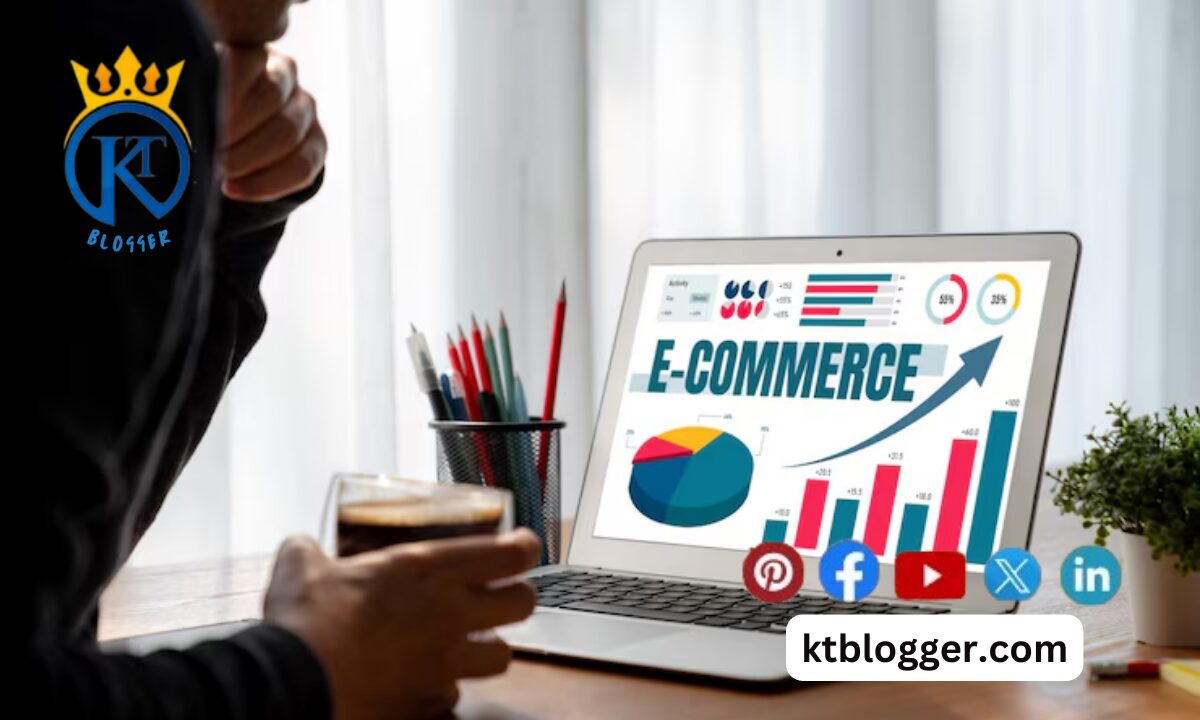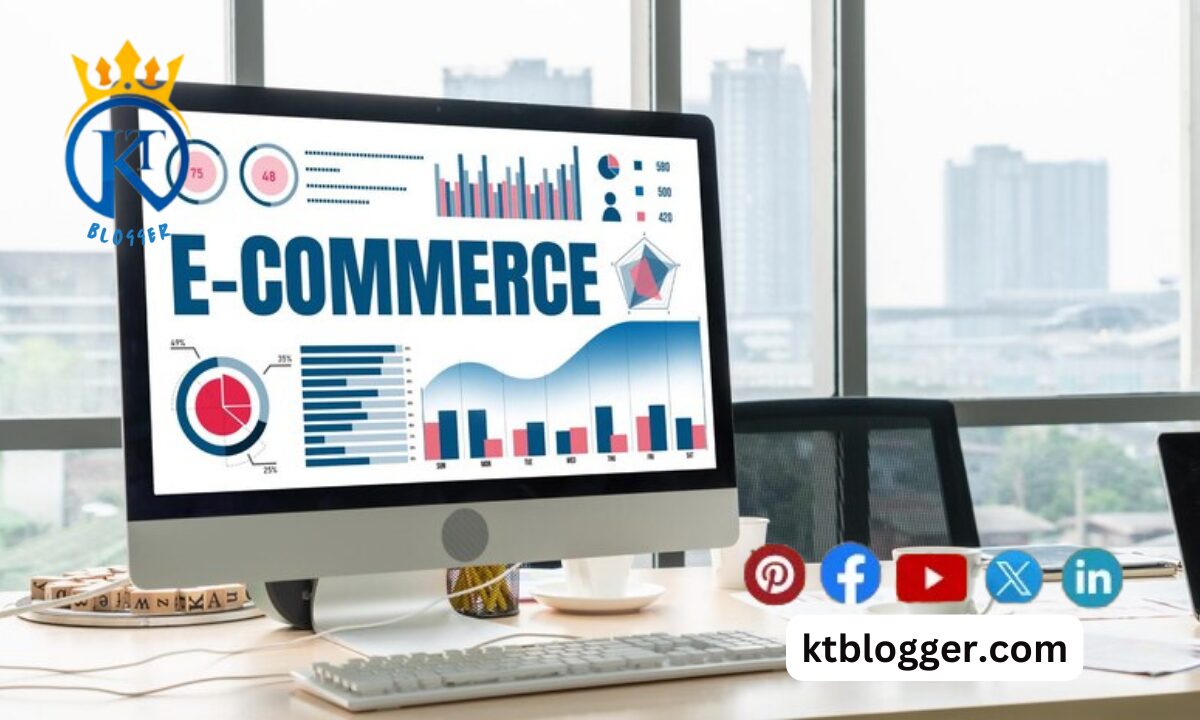Online shops are growing fast for small businesses. Many people like shopping online, and it’s easier than ever to find customers through social media.
But do you need a lot of money to start? Can you start an e-commerce business without money?
Starting any business without money is really hard, but there are ways to keep costs down when you start. It’s smart to keep things simple while you’re learning.
Before you start selling to customers, there’s a lot you don’t know. You might not know what products will be popular, or how much people will pay for them.
Starting small helps you save money until you figure out exactly what you want to do. For example, instead of paying someone to make a brand for you, you can use a free tool like Canva to make one yourself. There are lots of templates to help you get started.
So, in this article, I’ll explain how to start an ecommerce business without money. Plus, I’ll cover everything you need to know to succeed, like choosing the type of business you want and how to promote it.
Let’s get started!
Content
Why Start an Online Business for Free?
Starting an ecommerce business without money is possible with various strategies. Consider dropshipping, where you sell products without needing inventory. Print-on-demand is another option, allowing you to create custom products as orders come in. Affiliate marketing enables you to earn commissions by promoting others’ products.

Utilize free ecommerce platforms, like Shopify or WooCommerce, and leverage social media for marketing. Focus on niche selection and competitive analysis for success.
Starting an online business without money has many advantages:
1. It’s Accessible
Anyone with an internet connection can start an online business, regardless of their financial situation.
2. It’s Low Risk
Since you’re not investing any money upfront, you have nothing to lose if the business doesn’t work out.
3. It’s Scalable
Online businesses can grow quickly, and you can reinvest your profits to expand your operations.
4. It’s Flexible
You can work on your online business whenever and wherever you want, giving you more freedom and flexibility.
How to Start an Ecommerce Business Without Money?
To start an ecommerce business without money, focus on low-cost solutions. Utilize free marketing tools like content marketing, SEO, and email marketing. Bootstrap your store and work from home to save on expenses. Embrace a scalable business model, avoiding the need for inventory.
With determination and resourcefulness, it’s possible to launch an ecommerce venture even on a shoestring budget, making ecommerce accessible to all, including those in India looking to start online businesses without upfront investment.

Everyone has many chances, no matter what skills or experience you have – you just have to find them.
Here’s a step-by-step guide to starting an ecommerce business without money:
Step 1: Choosing a Business Model
The first step in starting an online business without money is selecting the right business model. While there are countless business models to choose from, I’ll focus on four popular options that require minimal or no upfront investment:
Print on Demand (POD): Be your own designer and sell custom t-shirts, mugs, phone cases, and more! Yes, There’s no need to buy inventory upfront. Instead, a third-party company prints, packs, and ships your creations after a customer orders. This is ideal for beginners because you don’t need a lot of money or storage space.
Pros
- Low startup costs
- Easy to manage
- Allows for creativity and customization
Cons
- Limited control over product quality and shipping times
- Lower profit margins compared to selling your own inventory
Affiliate Marketing: Promote other companies’ products and earn a commission for each sale you generate. As an affiliate marketer, you can capitalize on existing products or services without needing to manage inventory or handle order fulfillment. This allows you to focus on marketing and driving traffic to your affiliate links. With each successful referral, you earn a commission, making it a potentially lucrative venture.
Pros:
- Easy to start
- Requires no upfront investment
- Wide variety of products to promote
Cons:
- Reliant on other companies’ commissions (you only earn when they sell)
- May require a large audience to generate significant income
Dropshipping: Sell products online without ever having to touch them! Yes, When a customer places an order, you forward it to a supplier who then ships it directly to the customer. It’s a low-risk way to enter the e-commerce world.
Pros:
- Low startup costs
- No inventory management or fulfillment needed
- Wide variety of products to sell
Cons:
- Lower profit margins (you share profits with the supplier)
- Less control over product quality and shipping times
Selling Digital Products or Services: Selling digital products or services covers a wide range of items like e-books, online courses, and digital artwork. It’s a great way to make money from your skills and ideas without needing physical inventory. Digital products usually have low production costs and don’t require shipping, so you can keep most of the money you make. Plus, you can easily grow your business because there’s no limit to how many digital products you can sell.
Pros:
- High profit margins
- Scalable business model (sell the same product to many people)
- Low overhead costs (minimal expenses to run the business)
Cons:
- Requires creating valuable digital products or services
- May take time and effort to establish yourself as an expert
Step 2: Identify Your Niche

Once you’ve chosen your business model, the next step is to identify your niche market. A niche market is a specialized segment of the market that caters to a specific group of customers with unique needs or interests.
For example, If you’re interested in POD, you could pick a niche like pet lovers, fitness buffs, or fans of a TV show. Focusing on a niche helps aim your marketing and draw in interested customers. This boosts the chances of success for your POD business.
Step 3: Build Your Brand
Building a strong brand is essential for success in the world of eCommerce. Your brand is what sets you apart from your competitors and helps to build trust and loyalty with your customers. Here are a few key elements to consider when building your brand:
- Business Name: Choose a name that is memorable, easy to spell, and reflects the essence of your brand.
- Values: Clearly define your brand’s values and mission statement. What do you stand for, and what sets you apart from the competition?
- Visual Identity: Develop a cohesive visual identity for your brand, including a logo, color scheme, and typography. Consistent branding across all your marketing materials will help to reinforce your brand identity. This makes your store more recognizable to customers.
Step 4: Set Up Your Online Store
Once you’ve established your brand, it’s time to set up your online store. There are several options available for creating an eCommerce website, ranging from DIY platforms to custom-built solutions. Here are a few popular options to consider:

- Shopify: Shopify is a popular eCommerce platform that makes setting up and managing your online store easy. With a range of customizable templates and built-in features, Shopify is a great choice for beginners.
- WooCommerce: WooCommerce is a free WordPress plugin. It turns your WordPress website into a fully functional online store. Plus, It offers customizable themes and extensions, suitable for businesses of all sizes.
- BigCommerce: BigCommerce is a cloud-based eCommerce platform. It offers customizable templates, and marketing tools, and integrates with popular payment gateways.
Step 5: Market Your Store
Once your store is up and running, it’s time to start marketing your products and attracting customers. There are many different marketing strategies you can use to promote your online store, including:
- Social Media Marketing: Use social media platforms like Facebook, Instagram, and Twitter to promote your products and engage with your audience. Share photos, videos, and updates about your products. Encourage your followers to share them with their friends.
- Email Marketing: Build an email list of customers and prospects. Send out regular newsletters with updates, promotions, and special offers. Email marketing is a cost-effective way to stay in touch with your customers. It helps drive repeat business.
- Content Marketing: Create valuable content that educates and entertains your audience, such as blog posts, how-to guides, and product reviews. Publishing high-quality content can help to establish your brand as an authority in your niche. It can also attract more traffic to your website.
- Influencer Marketing: Collaborate with influencers who specialize in your area of interest. They can endorse your products to their followers. Influencer marketing helps you reach a broader audience and creates excitement about your brand.
Step 6: Grow Your Business
Once you’ve established your online store and started attracting customers, it’s time to focus on growing your business. Here are a few strategies you can use to scale up your operations and increase your revenue:

- Expand Your Product Line: Consider expanding your product offerings to appeal to a wider range of customers. Look for new products or services that complement your existing offerings and meet the needs of your target market.
- Invest in Marketing: Allocate a portion of your revenue to marketing efforts. These efforts will help you reach new customers and drive more sales. Experiment with different marketing channels and strategies. See what works best for your business.
- Optimize Your Operations: Look for ways to streamline your business processes and improve efficiency. This might mean automating repetitive tasks or outsourcing certain functions. You could also invest in technology to help you work more effectively.
FAQs
What’s the easiest business to start without any money?
Dropshipping is one of the easiest ways to start a business without money. You only pay for products when a customer buys them, so there are no upfront costs for inventory or storage. Plus, since it’s online, you can work from home.
Are there businesses I can start without any money?
Yes, there are several options. Print-on-demand is a good one. You can create designs for products using free online tools and only pay for manufacturing when someone orders. Other options include social media marketing consulting, freelance writing, or starting a service business.
How much does it cost to start a business?
The cost depends on the type of business. Some require a lot of money upfront for things like rent, while others can be started with just an internet connection. Businesses like dropshipping, print on demand, and selling digital products can be started without any money.
Summing Up
To sum up, as I finish my guide on how to start an ecommerce business without money, I hope it inspires you to take your first step toward success.
There are many ways to make money online, but it’s important to choose what’s right for you. Think about what you’re good at and what you want to achieve before you decide.





